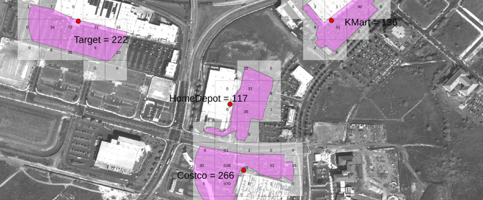Orbital Insight and the growing use of image processing

Orbital Insight uses artificial intelligence in the form of neural networks to gain key macro insights from satellite images.
“A satellite can cover every square inch of the earth every two weeks”
– Dr. Crawford, Founder of Orbital Insight
The implementation of image analysis algorithms to process images has become prevalent in the tech world as the price of storing and analyzing them has dropped precipitously. Social media companies, VR and AR companies, and autonomous vehicle developers have been pushing the field for the last few years. Now, companies have begun taking advantage of the proliferation of cheap satellites with advanced optics technology to start analyzing macro trends using images taken from above. Orbital Insight is one such company, giving macro market insight to companies and hedge funds, as well as partnering with the World Resources Institute to help curb global deforestation.
Orbital Insight’s value creation revolves around its use of artificial intelligence in the form of neural networks to gain key macro insights from satellite images. Convolutional neural networks mimic the processes of the human brain, observing multiple inputs and outputs, from which it creates approximation functions to describe the observed phenomena. The more data the program sees, the better the approximation function becomes, hence the “learning” aspect, and with human assistance this learning can be rapidly accelerated. To give an example, in order to teach its algorithms what a car was, the company marked certain cars with a red dot before the images were taken, then they would use features from those images to teach the algorithms what made a car. They implemented similar techniques for oil levels in oil storage containers, and roads/canopy density for deforestation.
These images can have resolution up to 30cm, and once they are processed and the relevant data recorded, Orbital Insight can then use historical data to find correlations in order to predict future performance. Examples include relating numbers of cars in a parking lot of a Home Depot with quarterly performance, amount of oil being stored with oil prices, crop density with prices, and roads and other factors to predict future deforestation.
This data is valuable to many different consumers. Companies may want to gather certain information on its competitors. Hedge funds want to gain an edge by getting insight on company and economic performance before it becomes public. And charitable organizations might want to see where to best deploy its assets (such as deforestation) based on images. Currently Orbital Insight implements a subscription model with companies and funds to capture some of the value it is creating.
As the previous examples demonstrate, the uses of this technology are abundant, and customers have been willing to pay. With exciting new technology, a wide variety of application, and money to be made, there have been a proliferation of competitors to Orbital Insight. Recently Climate Corp, a company that focused on giving agricultural advice based on images of fields, was sold to Monsanto for just under $1 Billion.
The real question with this technology is how useful they prove to be to customers. How well the image analysis can give reliable insight is crucial to these companies surviving. It is still too early to tell if these business cases prove themselves, as most of these companies are only a few years old, but as the image algorithms get better, and satellites continue to proliferate, one thing is certain, more and more light will be shed on the world.


